Guide to Climbing Mt Shasta
Climbing Mt Shasta is one of those adventures that sticks with you for life. If you’re ready to push yourself to new heights both literally and metaphorically Mt Shasta is calling your name. It’s not a walk in the park, though. It’s a climb that requires preparation, determination, and a love for stunning alpine scenery. Let me walk you through it.
Gear Essentials
To make sure you’re fully prepared, here’s a rundown of the essentials you’ll need before you even think about tackling the peak:
- Mountaineering Boots: Trust me, you don’t want to skimp here. A solid pair can be the difference between an enjoyable trek and absolute misery.
- Crampons & Ice Axe: Mt Shasta’s snow-covered slopes demand technical gear, even in summer. Practice using them before the big day.
- Layered Clothing: Temperatures shift dramatically. You’ll be hot while hiking but freezing on the summit. Think moisture-wicking base layers, mid-layers for warmth, and a windproof shell.
- Sunscreen & Sunglasses: UV exposure is no joke at high altitudes. Protect yourself from snow blindness and nasty burns.
Route Choices
Trekking up mt shasta offers several routes, each with its own personality. The most popular is the Avalanche Gulch route, which is great for beginners aiming to summit their first major peak. For seasoned adventurers, try the Casaval Ridge more challenging and less crowded, but far more rewarding.
Mental Prep
More than just a physical endeavor, summiting Mt Shasta is a mental game. Stay calm, breathe deeply, and remember: the mountain will still be there tomorrow if you need to turn back. Sometimes, that’s the hardest lesson to learn.
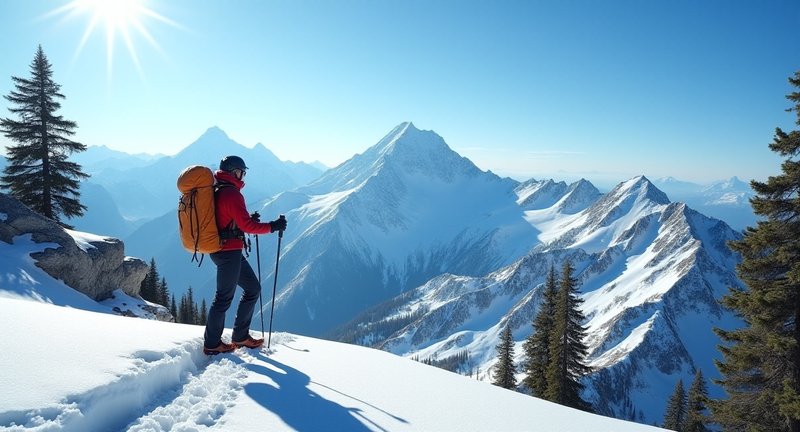
Take it from me, Conquering the heights of Mt Shasta is about finding a balance between respect for the mountain and trust in your abilities. Ready to take the first step?
The Benefits of Climbing Mt Shasta
There’s something about standing on the slopes of that majestic peak, knowing you’re about to experience a journey that few get to taste. It’s not just about reaching the top; it’s a test of will, patience, and the connection you form with the mountain itself.
Each step higher, the air changes. Crisp, pure, and thin, it forces you to slow down, to really feel each moment. And while your body tires, your spirit lifts, as if the mountain gives back in a way words can barely describe.
Up there, away from the noise of life, the world feels bigger, more alive. You start seeing things differently. The landscape unfolds beneath you, revealing secrets only visible from that unique vantage point. It’s like looking at life through a new lens.
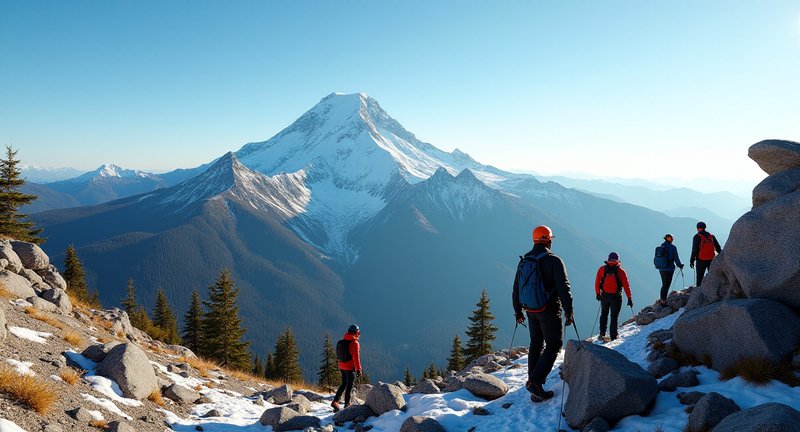
But what truly leaves a mark is the sense of accomplishment. It’s not about proving anything to anyone but yourself. You come down that mountain a little different than when you went up. Lighter, maybe, with a clearer sense of purpose.
It’s challenging, for sure, but that’s part of the reward. Every struggle, every breathless pause is a reminder that the best things in life take effort. And trust me, when you look back at the journey, every drop of sweat feels worth it.
Introduction to Conquering Mt Shasta
Standing before the towering figure of Mt Shasta is something that stirs the soul. It’s not just another peak it’s a place where earth and sky seem to touch. I remember my first journey to its base, feeling the pull of adventure tugging at me like an old friend calling out.
This mountain demands respect, yet offers something profound in return. You don’t just hike here; you embark on a journey that challenges your spirit. It’s a mix of preparation and passion, where each step feels like a conversation with the wild. Trust me, you’ll learn more about yourself than you’d expect.
I still recall the crispness of the air, a cold that feels clean, almost purifying. The paths may seem daunting, but they’re full of hidden beauty, revealing themselves as you push forward. Take it from me each elevation gained is like peeling back a new layer of awe.
There’s something humbling about navigating the slopes, especially when the world around you seems to shrink the higher you go. You’re not just walking a trail you’re dancing with nature’s raw power. And honestly, it’s an experience that stays with you long after you’ve descended.
In the end, conquering this majestic giant is less about standing on top and more about the personal victory of the climb. It leaves a mark, not on your body, but on your mind and heart, reshaping how you see challenge and reward.
Preparing for the Ascent: Essential Gear Checklist
Preparing for an ascent, especially on a mountain as captivating as the one we’re discussing, requires meticulous planning and gear selection. From my own adventures, I’ve learned that having the right equipment not only enhances safety but also elevates the entire experience. Here’s a checklist of essential gear that will help you conquer the challenges ahead.
Footwear:
- Mountaineering Boots: Sturdy, insulated, and compatible with crampons. Your feet will thank you later.
- Gaiters: Keep the snow and debris out; trust me, wet socks can ruin your day.
Clothing:
- Base Layer: Moisture-wicking materials keep you dry and warm. Avoid cotton it’s a notorious villain in cold conditions.
- Insulating Layer: Fleece or down jackets that provide warmth without bulk are your best allies.
- Outer Layer: A windproof, waterproof shell to shield you from the elements.
Safety Equipment:
- Crampons: Crucial for icy surfaces, they provide the traction needed on steep ascents.
- Ice Axe: An indispensable tool for self-arrest and navigating tricky terrains.
- Helmet: Protects your noggin from falling debris safety first!
Navigation Tools:
- Map and Compass: Technology can fail; traditional tools are reliable in a pinch.
- GPS Device: For those who prefer a digital approach, ensure it’s fully charged and tested.
Essentials:
- First Aid Kit: Accidents happen. Be prepared with a kit tailored for the outdoors.
- Hydration System: Staying hydrated is non-negotiable. Consider a bladder or durable water bottles.
- Food: High-energy snacks like trail mix or energy bars are perfect for keeping your spirits high.
Preparation is the key to a successful adventure. Each item on this list is a building block toward your summit, ensuring that your journey is as memorable as the view from the top.
Physical Conditioning Before Tackling the Mountain
Preparing your body for a lofty ascent is more than just lacing up boots. It’s an adventure in itself, a journey of discovery as you sculpt strength and endurance from the raw materials of your own being.
In my experience, physical conditioning is like weaving a context; every workout adds a vibrant thread. Focusing on core stability and leg strength is essential, as they form the foundation for those exhilarating moments of triumph at the summit.
I often find joy in cross-training think cycling through sunlit trails or hitting the gym for some spirited resistance exercises. Every drop of sweat feels like an offering, fueling my determination for that mountain looming on the horizon.
Don’t underestimate the power of flexibility; yoga can be your secret weapon. It’s in those deep stretches that I’ve discovered newfound freedom of movement, helping me glide over rocky terrains with the grace of a gazelle.
And let’s not forget about cardiovascular fitness! Whether it’s a brisk hike or a run that leaves your lungs singing, this endurance training transforms you into a powerhouse, ready to tackle whatever the mountain throws your way.
But remember, it’s not just about the physical. Visualize your goal; close your eyes and picture that breathtaking view waiting for you at the top. The combination of mental preparation and physical prowess creates an unstoppable force, ready to conquer any peak.
So gear up and embrace this journey. Every step you take in preparation is a dance towards your exhilarating adventure.
Understanding the Route Options for the Summit
In the context of exploring the routes that weave their way up the summit, a sense of excitement tingles in the air. Each path offers a unique tale, inviting adventurers to choose their own adventure.
From my experience, the routes vary in difficulty and scenery, creating a context of options that cater to every level of explorer. Some trails are gentle and winding, beckoning those who prefer a leisurely ascent, while others challenge the bold with steep inclines that will have your heart racing.
Imagine standing at the trailhead, the crisp mountain air filling your lungs, as you contemplate which path to take. Whether you’re seeking breathtaking vistas or a chance to connect with nature, there’s a route that speaks to your spirit.
One option that stands out is the route that cuts through lush forests, where sunlight dances through the leaves. It’s a magical experience, like walking through a green cathedral, as nature surrounds you and whispers secrets of the mountain.
If you’re in the mood for a challenge, the more rugged trails will test your resolve and provide a sense of accomplishment that lingers long after the journey. The moments spent navigating rocky terrain and pushing through fatigue can transform you in ways you never expected.
Also, the route you choose will shape your adventure and leave an imprint on your soul. As you plan your journey, remember to embrace the unknown and let each step take you closer to the summit.
How to Acclimate to the Altitude on Your Climb
When venturing into the towering realms of altitude, your body is thrust into a different kind of dance. Acclimating isn’t just a buzzword; it’s an art form that requires patience and intuition.
First off, take it slow. As I learned from my own escapades, rushing up the slopes is like inviting trouble. Allow your body to soak in the thinner air and give it time to adapt. Just like a fine wine, you need to let the altitude breathe before you dive headfirst into the climb.
Hydration is your unsung hero. Picture it: each sip of water is a refreshing kiss to your cells, helping them embrace the lower oxygen levels. I’ve found that keeping a water bottle handy makes all the difference. A little reminder that you’re nurturing your body can keep fatigue at bay.
You might feel a little lightheaded or even giddy. Don’t panic; it’s part of the game. Instead, embrace those sensations as part of the high-altitude experience. I remember laughing with my companions during moments of dizzy exhilaration; it turned nervousness into a shared adventure.
Also, listen to your body. If it whispers that it needs a break, don’t ignore it. I’ve often found that pausing to soak in the views has led to some of my favorite memories. After all, the journey to the summit is just as vital as standing atop the peak.
So, when you’re preparing for your ascent, remember to dance with the altitude, sip your water, and savor the moments of stillness.
Best Time of Year for a Successful Summit Adventure
When I think of ‘the best time of year for a successful summit adventure,’ my mind immediately drifts to climbing Mt Shasta. The thrill of standing atop this majestic peak is unparalleled, but timing your ascent can make all the difference.
Late spring to early summer is the sweet spot. The snow begins to melt, revealing glistening trails that beckon to adventurers like a siren song. Trust me; there’s nothing quite like the feeling of your boots crunching on a freshly thawed path while surrounded by the stunning beauty of nature awakening from winter slumber.
If you’re not a fan of frigid temperatures, then avoid the winter months. Ascending mt shasta in the dead of winter can be like wrestling an octopus; it’s tricky, and the conditions are unforgiving. I learned this the hard way, battling gusty winds and freezing temperatures that tested my willpower more than my physical strength.
But here’s a secret: the fall season offers its own charm. The changing leaves paint the landscape in vibrant hues, creating a breathtaking backdrop for your climb. Just be prepared for the unpredictable weather that can flip like a pancake at a county fair.
Also, my advice is to pay attention to the weather patterns and trail conditions. The journey of Summit expedition on Mt Shasta is as much about preparation as it is about the adventure itself. So pack your gear, check the forecast, and get ready for an unforgettable experience on this iconic mountain!
A Deep Dive into the World of Climbing Mt Shasta
As I embarked on my adventure to ascend the majestic peak, I felt the excitement bubbling inside me. The air was thick with anticipation, each breath tinged with the scent of pine and wildflowers.
Navigating the winding trails, I couldn’t help but marvel at the landscape that unfolded before my eyes. Majestic vistas painted in hues of green and blue seemed to stretch endlessly, beckoning me to explore further.
Every step felt like a dance with nature, each footfall resonating with the heartbeat of the mountain. I embraced the challenge, feeling alive amidst the rugged beauty that surrounded me.
The weather, a fickle friend, shifted dramatically, wrapping me in a cool embrace. Cloud formations swirled like wisps of cotton candy, reminding me of nature’s unpredictable artistry.
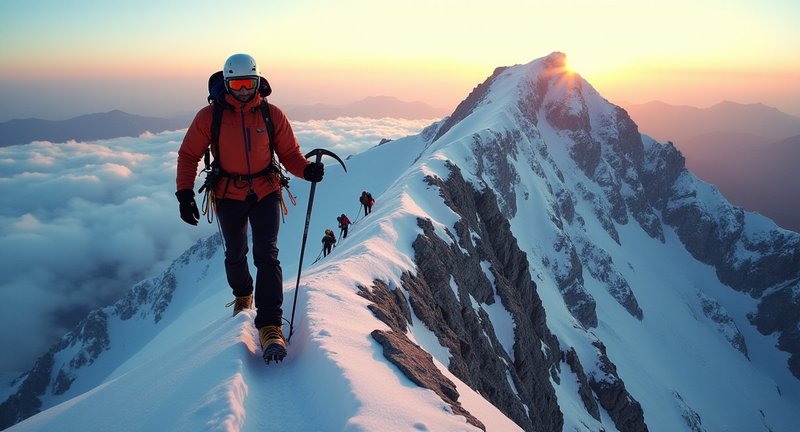
At higher altitudes, the air grew thin, and each inhale became a deliberate act. I paused to savor the silence, broken only by the distant calls of wildlife, a reminder that I was just a visitor in this serene wilderness.
Reaching the summit was nothing short of euphoric. The world below me transformed into a patchwork quilt of colors, reminding me of the beauty of our planet.
This journey is not just about reaching a destination; it’s about the stories carved into each step. It’s an invitation to connect with the earth and rediscover a sense of wonder that often gets lost in the everyday grind.
If you ever feel the call of the wild, heed it. The allure of the mountain is irresistible, and the rewards of the journey are treasures that will stay with you long after the adventure ends.
Safety Tips for a Smooth Journey Up the Peak
When embarking on an adventure to the lofty heights of a majestic peak, I always find that a sprinkle of caution adds the perfect flavor to the excitement. Here are some invaluable safety tips I’ve gathered from my experiences, ensuring that your ascent is not just thrilling but also smooth sailing.
1. Know the Terrain
Before setting off, spend time studying the landscape. Topographical maps and weather reports can be your best friends. Understanding the nuances of the path ahead can save you from unexpected surprises.
2. Gear Up Wisely
Having the right equipment is crucial. Here’s what I always carry:
- Proper Footwear: Sturdy hiking boots with good grip will be your loyal companions.
- Weather-Appropriate Clothing: Layering is key; think thermal base layers, a windbreaker, and a waterproof outer layer.
- Navigation Tools: A compass and GPS device can guide you like a beacon in the fog.
3. Stay Hydrated and Nourished
I can’t stress enough the importance of water. Pack a hydration system or multiple water bottles. Don’t forget energy-packed snacks think trail mix or protein bars to keep your spirits high.
4. Buddy System
Never venture alone. Having a trusted companion not only adds to the fun but also ensures that help is at hand in case of an emergency.
5. Respect Nature’s Wrath
Weather can turn on a dime. Be aware of changing conditions, and don’t hesitate to turn back if things look ominous. Remember, safety is paramount.
By embracing these tips, you can immerse yourself in the journey while keeping your wellbeing at the forefront. The thrill of reaching the summit is worth every ounce of preparation!
Essential Skills for First-Time Mountaineers
When embarking on a mountain expedition for the first time, I quickly realized that essential skills are more than just a checklist; they form the backbone of a successful adventure. The sheer majesty of towering peaks can be intoxicating, but without the right preparation, that beauty can swiftly turn into an overwhelming challenge.
One of the first skills I honed was navigation. Understanding how to read a topographic map and using a compass felt like holding the key to the mountain’s secrets. It was exhilarating to pinpoint my location amidst the vast wilderness, knowing that each twist and turn brought me closer to my goal.
Equally important is the art of pacing. I learned that hiking at a sustainable speed not only helps preserve energy but also enhances the experience. The rhythm of your steps can become a meditative dance, allowing you to connect deeply with the surroundings.
Another skill that proved invaluable was communication. Whether it’s with your climbing partners or a guide, clear dialogue can mean the difference between blissful camaraderie and chaos. Sharing thoughts on the terrain or weather updates fosters a sense of teamwork and shared responsibility.
Also, mastering basic first aid can be a lifeline. I’ve always believed that a calm demeanor can soothe even the most precarious situations. Knowing how to treat blisters or address altitude sickness empowers you to face challenges head-on.
Embarking on your first mountain adventure is as much about the journey within as it is about reaching the summit. Equip yourself with these skills, and you’ll be ready to embrace the mountain’s wild spirit.
Navigating the Avalanche Gulch Route
The Avalanche Gulch route beckons adventurers with its promise of stunning vistas and a unique thrill. I remember my first trek up this pathway; the air was electric with anticipation.
As I approached the trailhead, I could feel the mountain’s energy pulsing beneath my feet. Each step felt like an invitation, a chance to connect with the wilderness that surrounded me.
The early morning sun painted the sky with hues of orange and pink, casting an ethereal glow on the snow. It was as if nature itself was welcoming us to its majestic realm.
Navigating the route can be a dance with the elements. One moment, the winds whisper gentle encouragement, and the next, they roar with a fierce intensity, reminding me of the mountain’s raw power.
Along the way, I encountered fellow trekkers, each with their own stories etched in the lines of their faces. We shared fleeting moments of camaraderie, a collective appreciation for the challenge that lay ahead.
The landscape constantly shifts, revealing breathtaking panoramas that make every effort worthwhile. I often paused to soak it all in, letting the vastness wash over me like a refreshing tide.
As I climbed higher, the altitude began to play tricks on my senses. Breathing became a rhythmic challenge, but with each inhale, I felt more alive, more connected to the world around me.
Reaching the summit was a moment of pure ecstasy. Standing at that peak, I felt an overwhelming sense of accomplishment, as if the mountain had bestowed upon me its most treasured secret.
Embrace the journey on the Avalanche Gulch route; it offers not just a climb but an unforgettable experience that lingers in the soul long after the descent.
Weather Considerations for Your Ascent
When you’re contemplating a lofty adventure, the atmospheric ballet can make or break your experience. I’ve learned firsthand that understanding weather patterns is akin to deciphering a secret language. Here’s how to ensure you’re not caught off guard by the whims of Mother Nature:
-
Research the Forecast: Always check multiple weather sources. A sunny day in the valley can be a tempest at higher elevations. Don’t just rely on your favorite app; consider local mountain weather stations for more precise data.
-
Seasonal Variations: Each season unveils a different face. Spring can be fickle, with sudden snowstorms. Summer might bring sun, but storms can brew unexpectedly in the afternoons. Fall, while gorgeous, can surprise you with early snowfalls.
-
Microclimates: Mountains create their own weather systems. Pay attention to how your environment shifts as you ascend. One moment you’re basking in sunshine, the next, you’re dodging hail.
-
Wind Chill Factor: Don’t underestimate wind. Even a mild temperature can feel like a frigid bite at high altitudes. Layer your clothing to insulate against these changes and always carry extra gear.
-
Stay Flexible: Embrace the unexpected. If the weather shifts dramatically, don’t hesitate to alter your plans. Sometimes the most memorable moments arise from unplanned detours.
As you lace up your boots for your ascent, remember: respecting the weather can transform your journey from a mere trek to an awe-inspiring odyssey. Happy adventuring!
Hydration and Nutrition Tips for Your Mountain Trek
When you’re preparing for a mountain trek, it’s easy to get swept up in the thrill of the climb, but trust me, hydration and nutrition are your silent partners on this adventure. Staying hydrated isn’t just about sipping water whenever you remember it’s about consistently feeding your body the fuel it needs. I’ve learned that a hydration system, like a water bladder, works wonders. It keeps your hands free and encourages frequent, small sips. If you’re anything like me, you’ll find that gulping down too much water at once only leaves you feeling sluggish.
Nutrition is just as crucial, but it’s not about stuffing your pack with sugary snacks. You need slow-burning energy to keep your body moving steadily. Think nuts, dried fruit, and whole grains. You don’t want to crash halfway up the mountain. I always toss in a mix of protein bars that don’t melt in the sun trust me, nobody likes a gooey mess. Also, adding a little electrolyte powder to your water helps replenish what you sweat out, especially when the altitude starts playing tricks on you.
And don’t underestimate the power of a good meal before you set out. It’s not the time to experiment with new foods; stick with something you know will give you energy without upsetting your stomach. After all, there’s nothing worse than a grumbling belly at 10,000 feet. I find oatmeal and a side of protein always hit the spot. And whatever you do, don’t forget to treat yourself at the summit with a snack you’ve been saving it makes the victory that much sweeter.
Techniques for Managing Steep and Icy Terrain
When you’re faced with steep, icy slopes, it’s like nature is daring you to step up. The key is all in the footing digging your toes in, gripping the ground like you’re claiming it for yourself. I’ve found that stepping with intent, rather than hesitancy, gives you more control over each move.
Using crampons is not just about traction; it’s about technique. You’ve got to trust your gear, but also learn to dance with it, feeling how the metal bites into the ice as you ascend. Each step should feel deliberate, as if you’re carving your own path upwards.
Balance is another silent hero. In tricky spots, I find it helpful to keep my body weight slightly forward, like you’re leaning into the mountain, becoming part of its rhythm. Poles are your best friends here they offer that extra stability, helping you steady yourself when the surface gets a little too slick.
Of course, the terrain can change in an instant. One moment you’re striding confidently; the next, you’re facing an ice sheet that seems determined to take you down. This is where self-arrest techniques come into play. Having your ice axe ready, knowing how to use it, can be the difference between a controlled slide and a dangerous fall.
Take it slow. It’s tempting to rush, especially when you see the summit not far off, but this is when most slips happen. Treat every step like it’s your last chance to connect with the earth beneath you. You’ll find that steady persistence brings you farther than any hurried dash could.
Your Guide
Is Mount Shasta difficult to climb?
Mount Shasta can be quite challenging, especially due to its elevation and varying weather conditions. The mountain’s steep terrain and snow-covered slopes demand physical endurance and experience in mountaineering techniques. Climbers may also need to be prepared for altitude sickness as they ascend above 10,000 feet. Though it’s not considered a technical climb, the combination of altitude, weather, and icy slopes make it more demanding than many realize.
Can a beginner climb Mount Shasta?
While beginners can attempt to climb Mount Shasta, it’s highly recommended that they take a guided trip or undergo proper training beforehand. The mountain’s snow and ice conditions, particularly on popular routes like Avalanche Gulch, require crampon and ice axe use. Basic mountaineering skills are necessary for safety, especially during the ascent and descent. Those new to climbing should invest time in fitness training and learning basic climbing techniques before attempting the climb.
How long does it take to climb Mount Shasta?
Most climbers take two days to summit Mount Shasta. Typically, the ascent starts with a hike to a base camp, where climbers spend the night before making their summit attempt the next day. The summit day can take anywhere from 6 to 10 hours depending on conditions, fitness levels, and the specific route chosen. After reaching the summit, the descent usually takes an additional 4 to 6 hours. Some experienced climbers may attempt to summit in one day, though it is more strenuous.
What class climb is Mt. Shasta?
Mount Shasta is primarily a Class 3 climb, which means it requires the use of hands for balance and support but does not involve technical rock climbing. However, the difficulty of the climb can increase depending on the route and season. In winter or spring, the presence of snow and ice can raise the technical difficulty, making the use of crampons, ice axes, and potentially ropes necessary for safe passage.
Do you need ropes to climb Mount Shasta?
Ropes are not typically required for most routes on Mount Shasta, such as the popular Avalanche Gulch route, during the regular climbing season (late spring to early summer). However, ropes may be needed for more technical routes or if the conditions involve steep ice and snow. For less experienced climbers or during difficult weather conditions, ropes might be used as an extra safety precaution to prevent falls, particularly on steep or icy sections.
How much does it cost to climb Shasta?
Climbing Mount Shasta can vary in cost, but on average, climbers can expect to pay between $200 to $500 if they hire a guide service, which includes equipment rentals and instruction. If climbing independently, costs can be much lower, primarily for gear rentals, permits (about $25 for a summit pass), and camping fees. Additionally, climbers should budget for essential equipment, such as crampons, ice axes, and appropriate clothing if they do not already own these items.
How do you train to climb Mount Shasta?
To prepare for Mount Shasta, climbers should focus on both aerobic endurance and strength training. Long hikes, especially with elevation gain, are ideal for building the stamina needed for the ascent. Additionally, practicing on steep terrain with a loaded backpack helps simulate the physical strain of the climb. Strengthening core and leg muscles through exercises like lunges, squats, and step-ups is important. Mountaineering classes can also help with learning how to use crampons and ice axes, which are essential for safe climbing on the mountain.
Can you climb Mount Shasta in one day?
Yes, it is possible to climb Mount Shasta in one day, but it is a physically demanding endeavor that requires a high level of fitness and experience. The round-trip distance can be over 11 miles, with an elevation gain of more than 7,000 feet. Most climbers who attempt a one-day summit start very early, around midnight or 1 a.m., to reach the summit by mid-morning and avoid afternoon thunderstorms or deteriorating weather conditions.
What is the success rate of the Mount Shasta summit?
The success rate for summiting Mount Shasta is approximately 50-60%, though this can vary depending on the season, weather conditions, and the climber’s preparation. Factors such as altitude sickness, fatigue, poor weather, or lack of proper gear can hinder climbers from reaching the top. Guided trips tend to have higher success rates, as experienced guides help climbers navigate challenging sections and manage their pace throughout the ascent.
What is the most technically difficult mountain to climb?
Many mountaineers consider K2 to be the most technically difficult mountain to climb. Located in the Himalayas, K2 is notorious for its extreme weather, steep and exposed terrain, and high risk of avalanches. It’s considered a more dangerous and technical climb than Mount Everest, requiring advanced mountaineering skills and the use of fixed ropes on many parts of the ascent. Its notoriously treacherous conditions result in a high fatality rate compared to other peaks.
Is Mt Shasta harder than Mt Whitney?
Mount Shasta is generally considered more challenging than Mount Whitney due to its steep, snow-covered slopes and technical mountaineering requirements. While Mount Whitney is taller, its main hiking route, the Whitney Trail, is non-technical, requiring only hiking skills and basic conditioning. In contrast, Mount Shasta often requires the use of crampons and ice axes, and climbers must be prepared for snow and ice conditions, even during the climbing season. The physical demands of climbing Shasta’s steep slopes make it more difficult for many climbers.




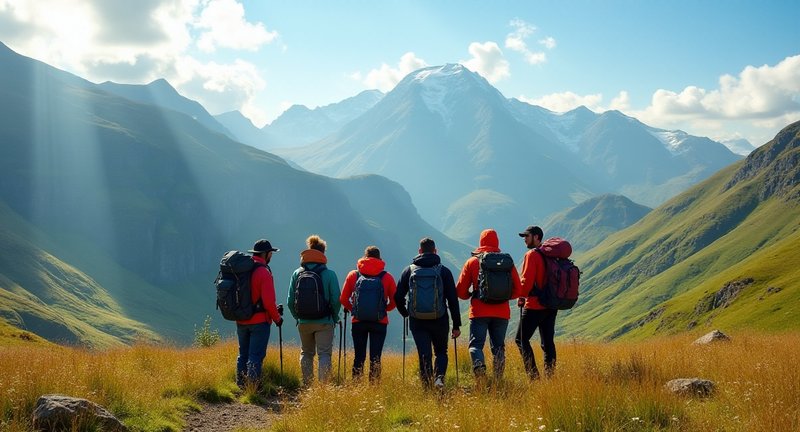
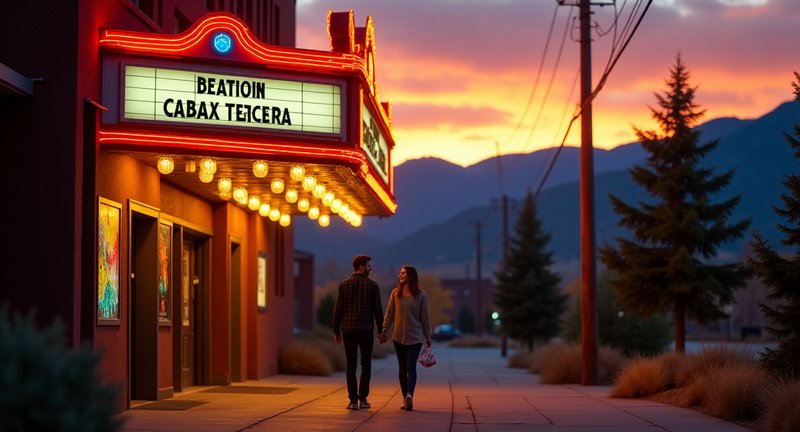
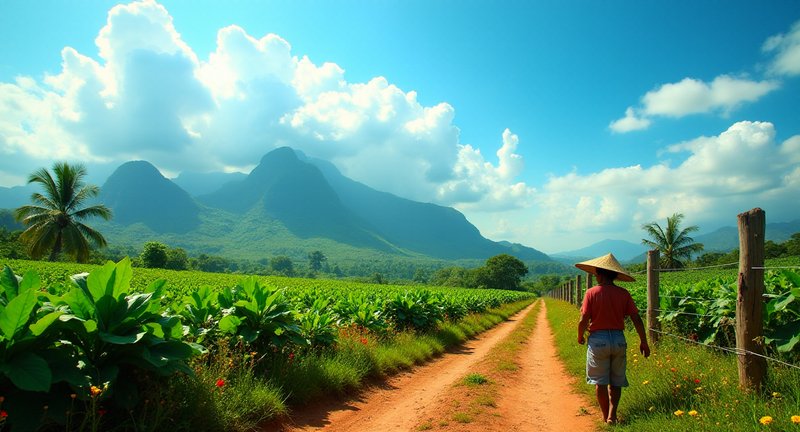




I couldn’t agree more about the importance of acclimating to high altitudes! It really is like an intricate dance between body and environment. I remember my first big trek totally underestimated the effect of altitude and rushed right in. Big mistake. Ended up with the worst headache of my life! Ever since then, I take it slow and let my body adjust gradually. And yes, hydration is such a game changer! I used to think it was just about staying hydrated like any normal hike, but at higher altitudes, it’s like the water has a whole new job to do, keeping your energy up and helping you avoid those dreaded altitude headaches. I love how you describe the lightheadedness as part of the experience, though. It really is! I’ve shared a few dizzy laughs with hiking buddies too it somehow turns nerves into this weird kind of fun. And you’re right about listening to your body. One of my favorite moments from a climb was during a break when we just sat there in silence, taking in t
This part about choosing different routes really resonated with me! I love how each trail has its own personality. When I hike, I always feel like the path I pick ends up defining my entire adventure. I’ve done both the leisurely scenic routes and the challenging ones that make you dig deep, and each has its own special reward. The way you described walking through the forest with sunlight filtering through sounds so peaceful it brought me right back to one of my favorite hikes. But there’s something so satisfying about conquering a tough trail too. It’s like the challenge makes the summit view even sweeter. I’m already planning my next adventure, and this definitely got me excited for it!
I absolutely love the idea of weaving a workout routine into your mountain training! Cross-training has been a game-changer for me too I feel like cycling and resistance training give you that all-around fitness you need on tough climbs. Also, totally agree on the flexibility part. Yoga has improved my balance and helped me prevent injuries on the trail. Thanks for the reminder!
Wow, this gear checklist is spot on! I learned the hard way how important each piece of equipment is after getting my feet soaked on a glacier hike because I forgot gaiters. That ruined the rest of the day for me, so now I double-check everything before heading out. I can’t stress enough how life-saving crampons and an ice axe are on icy terrains had a close call once, and they were literally the reason I made it safely. It’s great that you highlighted the importance of both traditional navigation tools and GPS; relying on technology alone can get risky in remote areas. This post really captures that balance of preparation and excitement. Adventure is fun, but you’ve got to be smart about it too! Definitely saving this list for my next ascent!
I absolutely love how you described the personal transformation that happens while climbing Mt. Shasta. It really does feel like the mountain teaches you something, almost like it’s alive. I went on my first real mountain trek a few years ago, and I can still remember how humbling it was. You’re totally right about feeling like you’re “dancing with nature’s raw power” there’s nothing like it. And the way you mention the air, that crisp, purifying cold, brings back so many memories! The part about each step being like a conversation with the wild really struck a chord with me. It’s one of those experiences that sticks with you long after the hike is over, reshaping not just your view of nature, but how you face challenges in life too. Can’t wait to head back to Mt. Shasta one day!
This is such a beautiful description of the experience! I’ve always believed that climbing is more than just a physical activity it’s like a spiritual journey. That feeling of being connected to the mountain and the shift in perspective as you climb higher, it’s like the mountain strips away all the distractions from everyday life. I remember when I climbed my first major peak, and I totally agree with how you described the air up there it almost forces you to be present in each moment. You can’t rush, and that slowness, the deliberate pace, helps you appreciate everything around you. I think it’s amazing how you mention coming down different than when you started. Climbing isn’t just about getting to the top but about what you learn along the way. You really captured that feeling here, and now I’m itching to get back out there for another adventure!
Wow, I’ve always dreamed of climbing Mt. Shasta, but reading this really gives me a sense of the challenge ahead. I totally agree that gear is everything! I made the mistake once of skimping on boots for a smaller climb, and it was the worst decision ever. My feet still haven’t forgiven me, so I’ll be taking your advice on the mountaineering boots for sure! I love how you described the different routes too, especially since I’m more of a beginner Avalanche Gulch sounds like the perfect intro for someone like me. I really appreciate the emphasis on mental prep; sometimes it’s easy to overlook that aspect, but it’s probably the most important part. This post has me even more excited (and maybe a little nervous) to take on this mountain!